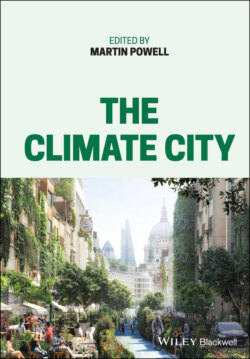Читать книгу The Climate City - Группа авторов - Страница 12
Introduction
ОглавлениеMartin Powell
If you walk along London’s embankment, you can see a gleaming river, lots of trees lining the streets, clean streets, some expansive green spaces and open areas, and Peregrine falcons nesting and flying between the buildings, and you breathe clean air.
Actually, none of that is entirely true. The river is regularly filled with sewage after heavy rain when the Victorian sewers merge storm water with sewage and the overflow goes into the Thames. This is being resolved with a super sewer being bored under the river as you read this. There are not enough street trees, but they are planted and added every year across the city. The green spaces are generally eroded over time. The wildlife is there to be seen, including the Peregrine falcons, but it is not exactly teeming with life, and the air regularly exceeds the World Health Organization (WHO) limits, as do all big cities, with some streets in constant breach of air quality limits.
It’s not good enough, but the reason London is considered a successful city is that it’s better than most. It’s moving faster than most to rectify these problems, which are constantly exacerbated by a rising population, a rising demand for goods, changing demographics, changing habits, and, above all, the need to mitigate and adapt to the existential threat of climate change.
